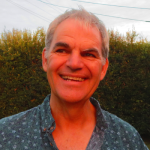“Curiosity will conquer fear even more than bravery will.” – James Stephens
I have seen people age 10 years after an accident or a nasty fall... breaks my heart.
The thing is, it's not just psychology. There are literal memories in the body that scream fear, make you anxious, hypervigilant, and disrupt your flow. Most experiences of anxiety are rooted in sensations in the body.
I can help you:
- Improve mobility, flow, and range of movement
- Reduce the distress of pain
- Restore personal control and pleasure in your body
- Find your confidence again
This work can restore a sense of calm and balance to the body, and help you regain your youthful vitality.
Take the next step
Book a free 20 minute evaluation session
Your First Session
 The therapeutic relationship is so important, never more so than when finding your confidence again. Projecting confidence is one thing, but to see your confidence reflected in another human being is truly healing.
The therapeutic relationship is so important, never more so than when finding your confidence again. Projecting confidence is one thing, but to see your confidence reflected in another human being is truly healing.
First we talk. We will establish a shared understanding of the physical and emotional realities that have shaken your confidence. We build rapport - a comfortable way of relating that feels safe, warm, responsive, creative. We will talk about your experience of confidence, fear, and freedom, and we will bring your awareness to into the body with a guided meditation.
Each person has a different experience after an accident or injury so we work with whatever surfaces. Typically we work face-up on a massage table, fully clothed, with minimal touch. We address pain, if present, showing you ways to "relax into the pain". Generally, if we pay full attention to the pain and reframe it, we do better than if we try to mask it. Then we address general tension and feelings of anxiety in the body; by breathing and shifting your awareness around the body, we can bring deep relaxation to each part, and quiten anxious circular thoughts in the mind.
In the physical realm we will work to:
- Adjust your posture
- Recover your full range of movement
- Soften your movements into a fluid flow
But the substance of this work is to "join the dots" between changes in the body, the accident or injury, and similar experiences in your life. Postural changes, tensions, reflexes, and "holding" in the body often arise from the emotions experienced in the accident. As we physically wind back these changes, we get to process the unresolved emotions - typically by sitting with awkward sensations until they settle and resolve.
The result of the work? Reduction of pain, tension, and anxious thoughts. Feeling more "at home in your own skin". A more fluid sense of movement in your body. These are the foundations of embodied confidence.
“Is it useful to feel fear, because it prepares you for nasty events, or is it useless, because nasty events will occur whether you are frightened or not?” – Lemony Snicket
Take the next step
Book a free 20 minute evaluation session
About Me

In recent years, I have immersed myself in mind-body medicine, and found that you really can't separate the two.
I have practiced bodywork for decades but the work took on a new meaning for me when I discovered the profound connections between emotions and the changes they evoke in the body. I first offered "Bodywork for Anxiety" sessions, not realising where it would take me.
Not surprising in hindsight, but there is often trauma (physical and emotional) underlying the anxiety. I now live and breathe trauma therapy, and helping people overcome physical trauma feels like the obvious next step.
FAQ
This work relevant to anyone seeking personal insight, growth, balance, or resilience. It is likely the therapy of choice if emotion plays a big role in your life - either as a source of vitality and inspiration, or of struggle.
This page specifically refers to feeling safe in the world. The need for safety is often born of a difficult childhood, social, physical, sexual, or emotional trauma, bullying, deceit, violation of trust, and controlling relationships.
You will need to do some work to "feel and heal", but if you want to change your emotions - to feel more vibrant, more stable, more aligned, more trusting, more anything - you will likely find value in the work.
Drop any idea of being "in therapy" for years. Embodied interventions tend to be short, and I want each session to bring meaningful change. The session time tends to create personal insights and new perspectives, which unfold in the week ahead. For a time, it will raise more questions than answers, so I would usually recommend a series of at least 3 sessions, no more than 8 in a stretch.
Often people seek help when they feel in crisis, and quickly feel the pressure is off... the crisis has been averted. I strongly recommend further sessions to consolidate the changes you have made. That way, you can make some small tweaks in your life and feel more resilient for your future.
Trauma is a distressing experience that overwhelms our ability to cope.
It's not the severity of the event that does the damage so much as the level of overwhelm. Never compare your trauma to someone else's. If you felt overwhelmed, your body carries a sense of "mortal danger" and the world feels unsafe, period.
Even mild overwhelm can leave a scar if it happens early in life, or over a prolonged period. These experiences have been labeled developmental trauma and complex trauma respectively - they tend to have a deeper impact and require more patience and understanding to resolve.
The "embodied emotional therapy" I offer is inspired by the work of Peter Levine. We create a "lived experience" of rising above the event(s) - e.g. seeing options where you could see none, speaking out where you were frozen and silent, or holding eye contact where you hid your face. In light of these new experiences, you can recall past events without the feeling of overwhelm... without trauma.
The effects of trauma are not logical, and they are not primarily the result of explicit memories. So we can have feelings of existential threat without literal memories. This makes a cognitive understanding difficult... but that's not the only way to understand, and not the only way to heal.
Embodied emotional therapy is what we call a "bottom up" therapy. We have ways of keeping our physiology calm when we expect to feel fear. So the trigger is no longer triggering, a scary memory or experience is no longer scary. Sometimes memories surface once it feels safe to remember... but it feels safe now.
Yes, we can heal trauma we don't remember, and we can heal trauma without digging up stories of the past.
There are two distinct ways of addressing difficult life challenges. The top down approach (most talk therapy) is to hear the story and the meaning we have layered upon it, recognise the underlying belief, challenge and discredit distorted beliefs, behave differently, and feel ok again.
Embodied emotional therapy is a bottom up therapy, based on the idea of bodymind. How we feel within our bodies has a huge influence on how we think - “my heart is racing, therefore I feel afraid”. And our thoughts influence our bodies - like the sinking feeling in your gut when you realise you have missed an appointment.
The magic of this work is that body sensations give us insight into our emotions.
- Becoming comfortable with the sensations can bring emotional healing.
- Feeling sensation in numb areas can restore vitality.
- And calming our physiological state can make the world a safe place again.
Bottom up therapies tend to bring flashes of insight. The mind can quickly join the dots between a sensation, an emotion, a forgotten memory, and an unfulfilled need. We can understand and heal the ever-repeating story that had us stuck.
There is nothing worse than living in a state of constant threat. It can overwhelm our emotions, make us sick, and reduce our life span. But it is our physiology that is killing us, not necessarily the danger that surrounds us.
In “fight or flight” our brain is changed. We are primed to see danger, we act instinctively without impulse control, the logic of our prefrontal cortex is shut down, and we can't tell the difference between a safe situation and a dangerous one.
Embodied emotional therapy can help us claim our birthright of feeling safe, even when danger is close at hand. As we learn to maintain calm physiology, we make better decisions, we have a more accurate sense of safety and danger, and we can maintain better relationships with the people who support us.
The strong intention with this work is to create an island of safety and gradually extend it out into your world. The best way is to show deep kindness and patience with yourself, and communicate your feelings as they arise so I can help you find a place of deep safety in-session.
Beforehand, try noticing any small thing that helps you feel lighter, or brings comfort. I don't recommend challenging yourself, trying to figure things out, or pushing to achieve something. Give yourself a wee holiday beforehand and the session work will flow more easily.
Take the next step
Book a free 20 minute evaluation session
Or keep the door open
Access resources to keep your life on track

